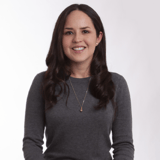Summary
DesignOps as a discipline offers career opportunities for people of many different backgrounds. This is true even for those who are just getting started and may have little to no professional experience. At Salesforce, we create unique opportunities to support, inspire, and guide new employees towards meaningful DesignOps careers. In this talk, we’ll share our experiences and best practices for newcomers, including a special look at our DesignOps internship program.
Key Insights
-
•
Design ops teams have grown 20-24% yearly, yet junior roles comprise only about 1%, indicating a gap in early-career hiring.
-
•
Most design ops practitioners come from related fields like project management or marketing, often with years of transferable experience.
-
•
Salesforce actively sources design ops interns and entry-level practitioners to diversify and grow its talent pool.
-
•
Junior design ops roles are financially more feasible and can help scale teams without large budget increases.
-
•
Entry-level design ops roles vary from interns to contractors to full-time junior hires, each with different expectations and commitments.
-
•
Interns Mariana and Liza successfully delivered projects spanning program management, meeting facilitation, internal communications, and event support.
-
•
Onboarding junior practitioners requires deliberate preparation: equipment, access, clear expectations, and introductions to key people.
-
•
Regular, honest communication and mentoring are crucial to uncover interests, build skills, and foster growth for new practitioners.
-
•
Building networks through cross-team one-on-ones and external communities accelerates new practitioners’ learning and career development.
-
•
Investing time in junior practitioners benefits managers too, offering fresh perspectives and opportunities for personal growth.
Notable Quotes
"Design Ops teams exist in nearly all industries and for all design functions, growing rapidly year over year."
"Junior roles represent only one percent of design ops roles, raising the question if we are missing opportunities to cultivate new talent."
"These brand new practitioners can bring fresh perspectives and new ways of thinking to hopefully see current problems in a new light."
"Investing in teaching from the ground up helps grow the design ops discipline for the future."
"Preparation is critical to set up new practitioners for success, including equipment, access, expectations, and introductions."
"Regular face time, honest conversations, and working sessions help keep connection and momentum with new practitioners."
"I don’t know what I don’t know – new practitioners may not even realize what questions to ask at first."
"Building a network early can create amazing opportunities further along the career path."
"Mentors from different teams provide valuable feedback, collaboration, and career guidance to new practitioners."
"It’s okay if these junior roles are short term; they help get started and expand the overall design ops talent pool."
Or choose a question:
















More Videos

"Conscious uncoupling is about identity — how one thinks of oneself defines oneself and how others define you."
Nalini KotamrajuResearch After UX
March 25, 2024

"Constraints can channel focus, but being stuck in them limits potential."
Dean BroadleyNot Black Enough to be White
January 8, 2024

"If you’re not doing the work of addressing your own pain, you won’t be effective in helping others."
Denise Jacobs Nancy Douyon Renee Reid Lisa WelchmanInteractive Keynote: Social Change by Design
January 8, 2024

"Reporting progress with data and stories opens up opportunities with stakeholders and builds credibility."
Kim Fellman CohenMeasuring the Designer Experience
October 23, 2019

"Design helps build capital and seek comfort, which draws in the most powerful."
George AyeThat Quiet Little Voice: When Design and Ethics Collide
November 16, 2022

"A design system is done not when the style guide is launched, but when it positively impacts customer experience."
Nathan CurtisBeyond the Toolkit: Spreading a System Across People & Products
June 9, 2016

"If agents do well, we do well. The more we know about you, the more we can make you better or fulfill your goals and aspirations."
Greg PetroffThe Compass Mission
March 10, 2021

"Culture is the sticky glue holding us together but flexible enough to allow us to move in new directions."
Chloe Amos-EdkinsA Cultural Approach: Research in the Context of Glocalisation
March 27, 2023

"User journeys are the bedrock for deciding which data to collect and measure."
Mackenzie Cockram Sara Branco Cunha Ian FranklinIntegrating Qualitative and Quantitative Research from Discovery to Live
December 16, 2022

















